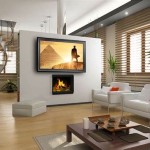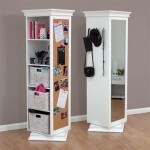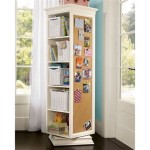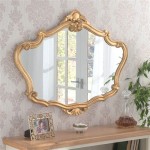Antiqued Mirror Panels in Dining Room Design: Enhancing Ambiance and Space
Antiqued mirror panels have emerged as a sophisticated design element for dining rooms, offering a unique blend of vintage charm and contemporary elegance. These panels, distinguished by their deliberately aged appearance, introduce depth, light, and a sense of history to the space. Unlike standard mirrors which provide pristine reflections, antiqued mirrors possess subtle imperfections, mottled textures, and faded spots that contribute to a warmer, more characterful aesthetic. This article explores the various benefits and considerations of incorporating antiqued mirror panels into dining room design, evaluating their impact on ambiance, space perception, and overall décor.
Expanding the Perceived Space and Enhancing Light
One of the primary benefits of using antiqued mirror panels in a dining room is their ability to visually expand the space. Similar to standard mirrors, antiqued mirrors reflect light and create the illusion of a larger room. This is particularly advantageous in smaller dining rooms where maximizing the sense of spaciousness is crucial. The reflective surface multiplies the natural light entering the room, making it brighter and more inviting. This is important for creating a comfortable dining atmosphere, especially during evening meals when artificial lighting is more prominent. The antiqued effect, however, softens the reflected light, preventing the harsh glare that can sometimes occur with standard mirrors, resulting in a more diffused and pleasant illumination.
The strategic placement of antiqued mirror panels is crucial for optimizing their space-enhancing properties. Panels installed on a full wall create the most dramatic effect, essentially doubling the perceived dimensions of the room. Alternatively, smaller panels strategically placed behind furniture or artwork can subtly enhance the sense of depth and openness. When positioning panels opposite windows, they amplify the incoming natural light, creating a brighter and more airy atmosphere. Proper planning and consideration of the room's existing layout are essential to achieve the desired effect.
Furthermore, the use of antiqued mirror panels can be an effective solution for dining rooms with limited natural light. By reflecting and distributing the available light, these panels can significantly brighten the room without relying solely on artificial illumination. This can contribute to a more welcoming and comfortable dining experience, particularly in spaces that tend to feel dark or enclosed. The subtle variations in the antiqued finish also prevent the mirror from appearing too sterile or clinical, adding warmth and character to the room.
Creating a Unique Ambiance and Aesthetic
Beyond their space-enhancing properties, antiqued mirror panels significantly contribute to the ambiance and aesthetic of the dining room. The aged appearance of the mirrors introduces a touch of vintage charm and sophistication, creating a unique and memorable dining experience. The subtle imperfections and variations in the finish add character and depth, preventing the room from feeling too modern or sterile. This can be particularly appealing for those seeking a more traditional or eclectic design style.
The versatility of antiqued mirror panels allows them to be integrated into a wide range of design schemes. They can complement both traditional and contemporary décor, adding a touch of elegance and refinement. In a traditional setting, the aged appearance of the mirrors can enhance the sense of history and authenticity. In a contemporary setting, they can provide a contrasting element, adding visual interest and preventing the room from feeling too minimalist or impersonal. The neutral tones of most antiqued finishes allow them to blend seamlessly with various color palettes and materials.
The aesthetic impact of antiqued mirror panels can be further enhanced through careful selection of frames and surrounding décor. Ornate frames can amplify the vintage feel, while sleek, minimalist frames can create a more contemporary look. The lighting choices also play a crucial role in highlighting the unique characteristics of the mirrors. Warm, diffused lighting can accentuate the aged appearance and create a cozy atmosphere, while brighter, more focused lighting can showcase the reflective properties and add a touch of drama. The careful integration of these elements is essential for achieving a cohesive and visually appealing design.
Practical Considerations and Installation
While antiqued mirror panels offer numerous aesthetic and spatial benefits, several practical considerations must be addressed before incorporating them into a dining room design. These considerations include the cost of materials and installation, the maintenance requirements, and the potential safety concerns.
The cost of antiqued mirror panels can vary depending on the size, thickness, and quality of the glass, as well as the complexity of the antiquing process. Custom-made panels, in particular, can be more expensive than standard sizes. Installation costs will also vary depending on the size and complexity of the project, as well as the expertise of the installer. It is important to obtain multiple quotes from qualified professionals to ensure a fair price and a high-quality installation. A professional installation is highly recommended to ensure the panels are securely mounted and properly aligned.
Maintenance is another important consideration. Antiqued mirror panels require regular cleaning to maintain their appearance. However, harsh chemicals and abrasive cleaners should be avoided, as they can damage the finish. A soft cloth and mild soap and water are generally sufficient for removing dust and fingerprints. It is also important to protect the panels from excessive moisture and humidity, as this can cause the antiqued finish to deteriorate over time. Regular maintenance will help to preserve the beauty and longevity of the mirrors.
Safety is paramount when installing antiqued mirror panels, particularly in a dining room where children or pets may be present. The panels should be securely mounted to the wall using appropriate adhesives and fasteners. The edges of the panels should be smooth and free from sharp points to prevent accidental injuries. If the panels are particularly large or heavy, additional support may be necessary. It is also important to consider the potential for breakage and to take appropriate precautions to prevent accidents. Using safety-backed mirror panels can help to mitigate the risk of shattering and reduce the potential for injuries in the event of an accident.
In summary, antiqued mirror panels can be a valuable addition to any dining room design, offering a unique blend of aesthetic appeal and practical benefits. By carefully considering the various aspects of design, cost, maintenance and installation, one can effectively incorporate these panels to create a stunning and inviting dining space.

25 Sophisticated Antique Mirror Ideas For Your Home Digsdigs Elegant Entryway Tiles Living Room Mirrors

Antique Mirror Wall The Glass Pe A Division Of Builders Bonita Inc

Antique Mirror A B11 20x20 New Dining Room Tiles

The Mirror Wall Is In Again Architectural Digest

An Old New Trend That Has Us Thinking We Might Be Ok With Faux Aging Emily Henderson

Contemporary Tufted Antique Mirror Tile Feature Wall Transitional Dining Room Miami By Builders Glass Of Bonita And The Pe Houzz

Mirrorworld Hand Painted Mirrors

Mirror Walls The Glass Pe A Division Of Builders Bonita Inc

Restaurant With Antiqued Mirror Wall

Antique Mirror Tile A K2 20x20 30 Off Tiles Wall








